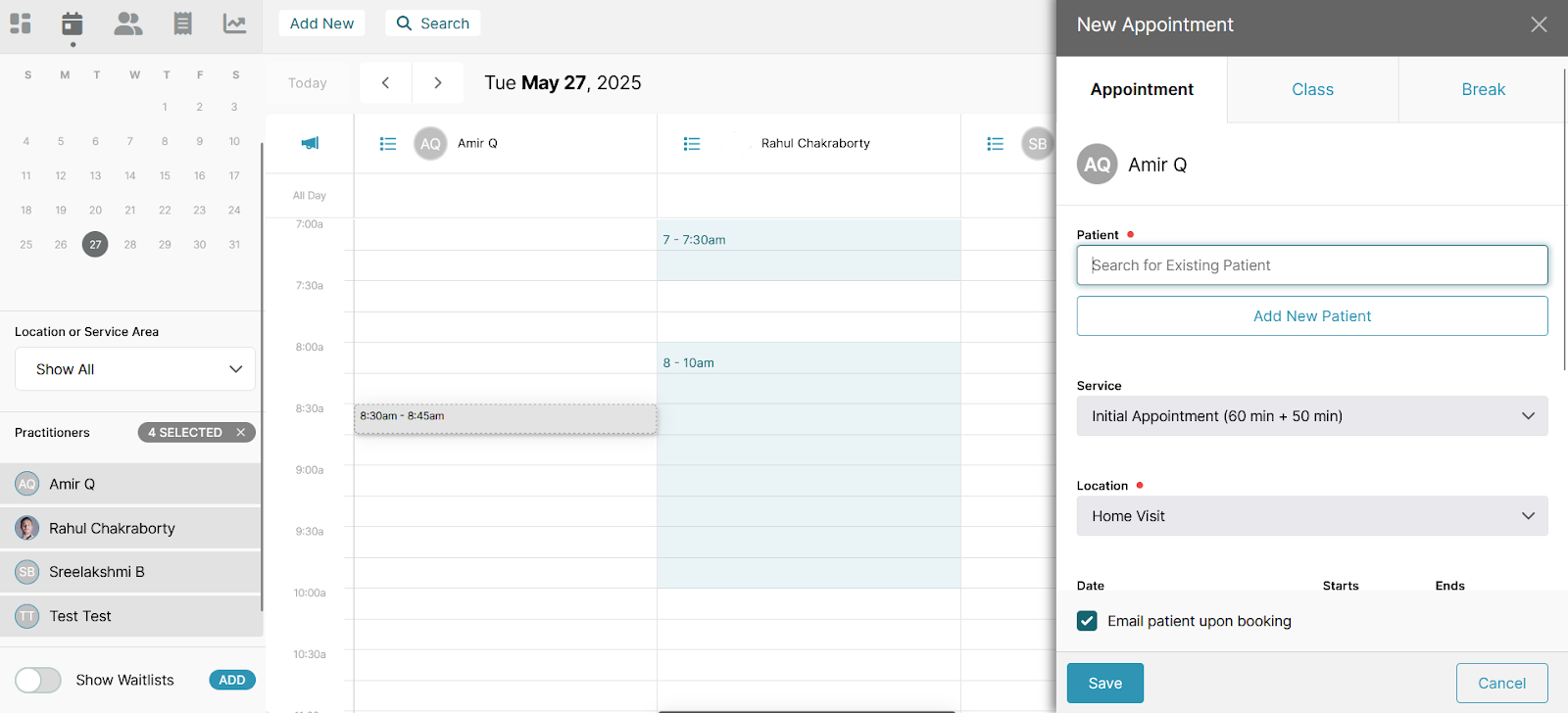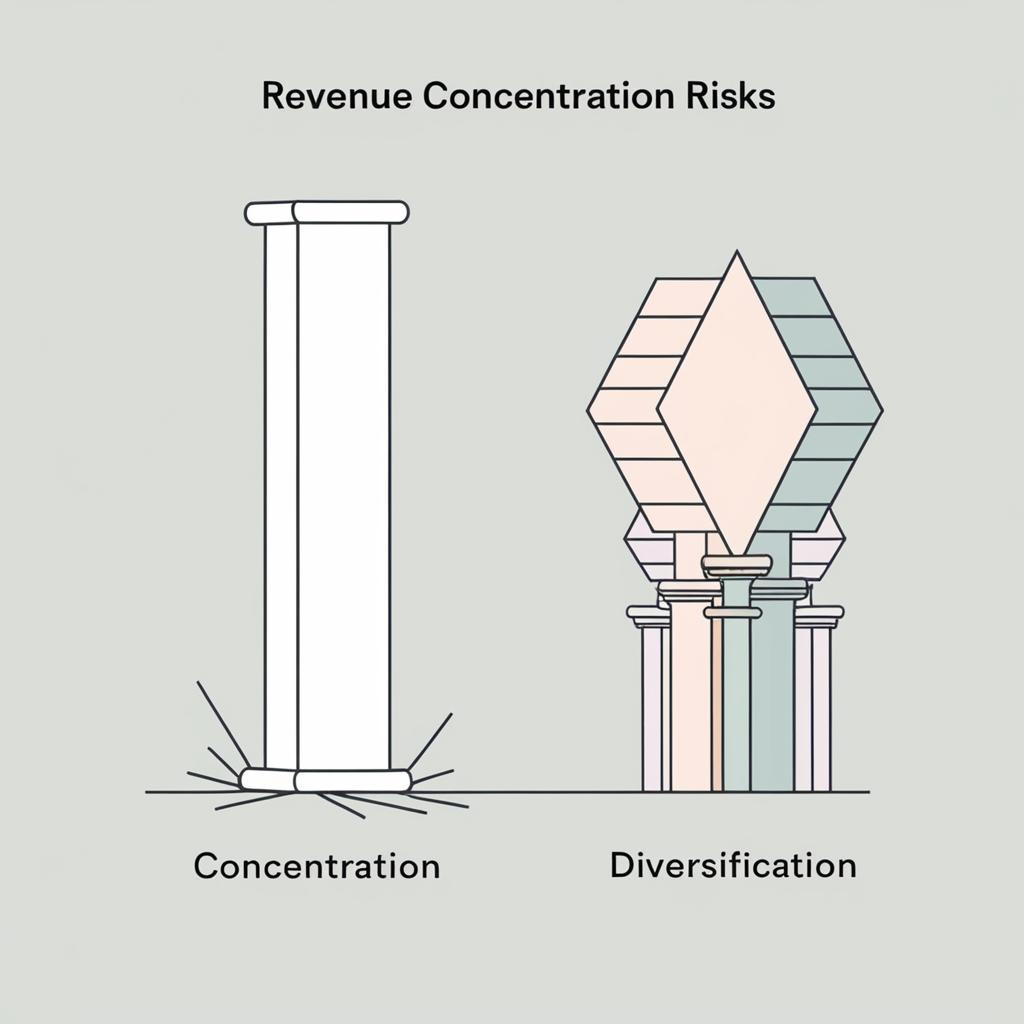Cyber Monday Offer is Here! Subscribe by December 5 to Get 3 Months Free!
Learn More
Table of Contents

Experience Better Practice Management Today!
Starting at $28.05/month
No Credit Card Required

Experience Better Practice Management Today!
Starting at $30/month
No Credit Card Required
You've invested years building your practice. Your clinical skills are sharp. Patient reviews shine. Yet something feels off about your clinic's growth trajectory.
I’ve worked with thousands of chiropractors, massage therapists, and physiotherapists over the past decade. I’ve seen what works. I’ve seen what breaks. And more often than not, the clinics that struggle aren’t lacking clinical expertise—they’re missing something behind the scenes.
Most clinic owners focus on apparent metrics, such as patient volume, marketing reach, and fee structures. These matter, but they mask a deeper issue that quietly drains profitability and stunts sustainable growth.
The missing piece? A structured, reliable service and operational strategy. This oversight creates revenue leaks, scheduling nightmares, and vulnerabilities that can devastate your business overnight.
Here's why this matters more than you think, and how to address the issue.
A clinic service strategy goes far beyond delivering quality care. It's your blueprint for providing consistent service, allocating resources effectively, and maintaining operational resilience. Without one, you're essentially flying blind.
Think of it this way: you wouldn't perform spinal adjustments without understanding anatomy. Yet many clinic owners run their businesses without understanding operational anatomy.
Here's what happens when your service strategy is weak or undefined:
Revenue bleeds through appointment gaps and inconsistent scheduling. Patients receive different experiences depending on which clinician they are assigned to. Your team operates in silos rather than as a coordinated unit.
Many owners fall into common traps. They believe hiring more clinicians automatically solves capacity issues. They think aggressive marketing compensates for operational weaknesses. They assume expensive equipment guarantees better outcomes.
These solutions treat symptoms, not the root cause.
Your chiropractic practice management software can either expose or mask these problems. Robust platforms like Noterro reveal patterns in your data and critical insights behind confusing reports and manual processes.
Interesting read: Affiliate Marketing for Chiropractors: 8 Simple Strategies for Big Results
Part-time clinicians create appointment bottlenecks that frustrate patients and reduce treatment adherence. When your massage therapist works Tuesdays and Thursdays only, patients struggle to maintain consistent care schedules.
Consider this real scenario: A patient needs twice-weekly treatments for optimal recovery. Your part-time clinician's schedule forces appointments ten days apart instead of three to four days. Treatment effectiveness drops. Patient satisfaction plummets. Revenue per patient decreases.
The hidden costs multiply quickly. Lost appointments mean lost revenue. Dissatisfied patients rarely refer to friends. Incomplete treatment plans damage your clinical reputation.
Strategies to mitigate scheduling risks:
Use Noterro’s online scheduling feature to schedule for part-time staff during your busiest days and times. Use the admin access to identify and block their calendars for recurring patients who need consistent care.

Create backup protocols when key clinicians are unavailable. Cross-train team members to handle basic patient needs. Establish relationships with substitute practitioners for emergency coverage.
Bonus read: The Future of Chiropractic: 12 Trends & Technologies to Watch in 2025
What happens when your only registered massage therapist takes maternity leave? Or does your associate chiropractor move to another city? Many clinics discover they've built their entire service model around irreplaceable individuals.
This creates massive revenue and retention risks. Patients who can't see their preferred clinician often seek care elsewhere. Some never return, even after your clinician comes back.
The redundancy principle works in healthcare just like other industries. Airlines don't fly planes with single engines. Hospitals don't rely on one emergency physician per shift. Your clinic shouldn't depend on individual practitioners for entire service lines.
Building service redundancy requires intentional planning:
Hire at least two practitioners per major service discipline when patient volume supports it. Train existing staff to handle basic functions across multiple areas. Develop relationships with reliable contract clinicians for emergency coverage.
Document your processes so any qualified practitioner can maintain care continuity. Create standardized treatment protocols that ensure consistent patient experiences regardless of who provides care.

Many practices generate more of their revenue from initial assessments and basic adjustments. This concentration creates dangerous vulnerability to market shifts and patient volume fluctuations.
Economic downturns reduce discretionary healthcare spending. Insurance changes affect reimbursement rates. New competitors enter your market. When most of your income comes from similar services, these disruptions hit hard and fast.
Diversified revenue streams provide stability and growth opportunities. Successful practices develop multiple income sources that complement their core services without diluting their clinical focus.
Consider these viable options for chiropractic clinics:
A helpful read: 6 Chiropractic Loyalty Program Ideas to Retain Clients
Your practice management software contains the diagnostic data you need. The key is knowing which metrics reveal operational health versus surface-level performance.
Your practice management software already holds the clues you need to uncover this hidden issue. The challenge is knowing which numbers really show how your clinic is running beneath the surface, not just the obvious day-to-day results. Here are the key metrics I recommend checking every week:
If you’re using Noterro, the reporting feature makes tracking these numbers easy. A simple scorecard can help too, using red, yellow, and green indicators so you can spot problems at a glance. Share this with your team so everyone understands how their work impacts the clinic’s overall health.
It’s important to stay alert to these common warning signs that could indicate underlying problems in your clinic:
Also read: Chiropractic Email Marketing Playbook: 11 Proven Strategies to Minimize No-Shows
Let’s talk about how you can build a service strategy that supports your clinic’s long-term success without feeling overwhelmed.
Having consistent clinician availability matters more than juggling part-time convenience. Patients want to know they can see their preferred practitioner when they need to. When schedules stay steady, treatment outcomes improve, and patient satisfaction goes up.
When you’re hiring, look for candidates who can commit to regular shifts that match when your patients need care most. Sure, some services do well on Tuesdays and Thursdays, but primary care usually needs more flexible availability.
Cross-training your team adds valuable flexibility, too. Train your front desk staff to help with simple clinical tasks when needed, and encourage clinicians to cover some functions outside their specialties. This kind of teamwork keeps things running smoothly.
Make sure your compensation plan supports your goals. Bonuses and fee splits should reward behaviors like patient retention, keeping appointments on track, and stepping up to cover shifts when needed.
And don’t forget about your clinic management software — it can help you schedule smarter. Automated booking tools fill gaps and save time. Set up alerts so you know when schedules get out of balance before it becomes a problem.
You might also like: How to Elevate Your Chiropractic Clinic’s Perceived Value For Free
Adding new services just for the sake of it rarely works. Pick offerings that make sense for your clinic’s philosophy and your patients’ needs. When you diversify with purpose, it boosts your core business instead of pulling attention away.
Try testing new services in small pilots during your quarterly planning. Track how they perform and scale what works. Don’t hesitate to drop what isn’t moving the needle.
Some smart options to consider:
Use your software’s reporting tools to track which services bring in the most revenue. This way, you can make smarter decisions about where to invest next.
Technology should give you more time for patients, not add more work. Platforms like Noterro can automate routine tasks, like sending appointment reminders to reduce no-shows, simplifying billing, and providing real-time reports to guide your decisions.
Look for systems that fit your current workflow and grow with your practice. Some tasks need a personal touch, while others are perfect for automation. Find the right mix that fits your clinic’s culture and your patients’ expectations.
Even small improvements in keeping patients coming back can make a big difference. Research shows a 5% boost in retention can increase profits by 25% or more.
Here are some practical retention tips:
With these strategies, you’re building stronger patient relationships while maintaining a healthy and growing clinic.
Related read: Top Challenges Chiropractors Face When Managing a Business
This “secret” is not really hidden but often overlooked. Many clinic owners focus on clinical skills but miss the operational side. That gap creates weak points that slow growth and risk long-term success.
Your clinic has more potential than you realize. The difference between good and great clinics is how well daily operations are managed.
Start small by improving scheduling backup, diversifying revenue, or tracking patient retention better. Small changes add up.
Patients need steady care. Your team needs reliable systems. You deserve a practice that grows without constant firefighting.
Tools like Noterro make tracking and improving these areas easier. The question is, will you tackle this challenge before it tackles you?
1. What early warning signs show my clinic’s revenue could be at risk beyond just financial reports?
Beyond numbers, watch for rising no-show rates, decreasing patient visits, overdependence on one service, and inconsistent clinician schedules. These signals often point to deeper operational problems that can hurt revenue if left unchecked.
2. Can improving clinic operations help reduce clinician burnout? In what ways?
Yes. Efficient scheduling, clear workflows, and cross-training reduce stress and last-minute emergencies. When clinicians have predictable hours and support from well-organized systems, they can focus more on patient care and less on administrative hassles.
3. Should I hire more clinicians or invest in technology to address operational problems?
It depends on your clinic’s needs. Hiring can increase capacity but won’t fix underlying inefficiencies. Investing in technology, like smart scheduling and automated reminders, can improve operations and patient experience, often giving you more impact for your investment.
4. How often should I review operational and financial reports to spot issues early?
Weekly or biweekly reviews work best. Regular check-ins help you catch trends like appointment gaps, declining visits, or revenue shifts before they become bigger problems. Consistent monitoring lets you act quickly and keep things on track.
5. Are these strategies effective for small or solo clinics too?
Absolutely. Small clinics may face similar challenges but with fewer resources. Using these strategies helps optimize limited staff and time, improve patient retention, and build a sustainable practice no matter the size.
Tags



